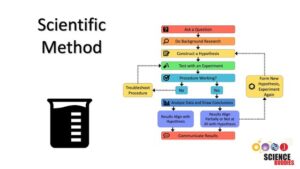By Study Rhino
Biodiversity is the rich variety of life on Earth. It includes all living organisms—plants, animals, fungi, and microorganisms—and the ecosystems they form. From the deepest oceans to the tallest mountains, biodiversity is what makes our planet vibrant, resilient, and sustainable. But why exactly is biodiversity important, and why should students, educators, and decision-makers care about it today more than ever?
In this article, we explore what biodiversity means, why it matters, and what we can do to protect it.
What is Biodiversity?
Biodiversity is a combination of two words: “biological” and “diversity.” It refers to the variety and variability of life forms in a particular habitat or on the entire planet. Scientists often classify biodiversity into three levels:
- Genetic Diversity – the variation of genes within a species. For example, different breeds of dogs or types of apples.
- Species Diversity – the variety of species within a habitat or ecosystem. Think of a rainforest teeming with birds, insects, reptiles, and mammals.
- Ecosystem Diversity – the different types of ecosystems found on Earth, such as forests, deserts, wetlands, coral reefs, and grasslands.
These levels are interconnected. Losing one species can impact entire ecosystems, and reduced genetic diversity can make species more vulnerable to diseases and environmental changes.
Why is Biodiversity Important?
Biodiversity is essential for a healthy planet. It provides us with food, clean water, medicine, and materials. It also helps regulate the climate, control diseases, and maintain soil fertility. Let’s break down some of the major reasons why biodiversity matters.
- Ecosystem Services
Biodiversity supports ecosystems that provide services critical to life:
- Pollination: Bees, butterflies, and other insects pollinate over 75% of the crops we eat.
- Water purification: Wetlands and forests filter pollutants from water.
- Soil health: Worms, fungi, and bacteria decompose organic matter, improving soil quality.
- Climate regulation: Forests absorb carbon dioxide, reducing the impact of climate change.
Without biodiversity, these systems would collapse, affecting human health and livelihoods.
- Food Security
A diverse range of crops and livestock ensures food stability. Genetic diversity in agriculture helps protect against pests, diseases, and changing climates. For example, the Irish Potato Famine in the 1840s was made worse by a lack of genetic variation in crops. Today, as climate change threatens global agriculture, preserving crop and livestock diversity is more crucial than ever.
- Medicine and Health
Many modern medicines are derived from natural sources. Aspirin originally came from willow tree bark, and penicillin comes from mold. Plants, fungi, and microorganisms hold the potential to treat diseases, some of which we may not even have discovered yet. By losing species to extinction, we may also be losing future cures.
- Cultural and Spiritual Value
Biodiversity has deep cultural, spiritual, and recreational significance. Many Indigenous communities around the world rely on biodiversity for traditional knowledge, rituals, and daily life. National parks, nature trails, and wildlife reserves also provide opportunities for eco-tourism and mental well-being.
- Economic Value
Biodiversity contributes to the economy in sectors like agriculture, forestry, fisheries, and tourism. The global biodiversity economy is worth trillions of dollars. Yet, we often undervalue these benefits until they’re gone. For example, the collapse of bee populations could result in billions in lost agricultural output due to poor pollination.
The Threats to Biodiversity
Despite its importance, biodiversity is under threat like never before. According to the Intergovernmental Science-Policy Platform on Biodiversity and Ecosystem Services (IPBES), over 1 million species are at risk of extinction. The main drivers of biodiversity loss include:
- Habitat Destruction
Forests are cleared for agriculture, cities, and infrastructure. Wetlands are drained and rivers diverted. These actions destroy the homes of countless species, pushing them toward extinction.
- Pollution
Air, water, and soil pollution impact wildlife health. Plastic waste in oceans kills marine animals, while chemical runoff harms plants and freshwater species.
- Climate Change
As temperatures rise and weather patterns shift, many species struggle to adapt. Coral reefs, for example, suffer from bleaching caused by warming oceans.
- Invasive Species
Non-native species introduced by humans often outcompete local species for resources. Examples include zebra mussels in North America and cane toads in Australia.
- Overexploitation
Overfishing, illegal hunting, and logging push species beyond recovery. Many animals, like elephants and tigers, are endangered due to poaching and habitat loss.
Why Students Should Care About Biodiversity
As future leaders, scientists, and citizens, students play a vital role in protecting biodiversity. Understanding biodiversity helps develop critical thinking and environmental responsibility. Here are a few reasons why it matters for young learners:
- Interdisciplinary Learning: Biodiversity connects biology, geography, economics, and social studies.
- Problem-Solving Skills: Addressing environmental challenges encourages creativity and innovation.
- Career Opportunities: Environmental science, conservation biology, sustainable agriculture, and eco-tourism are growing career fields.
- Personal Impact: Everyday choices—from the food we eat to the products we buy—affect biodiversity.
By learning about biodiversity, students can become agents of change in their schools, communities, and beyond.
Success Stories in Biodiversity Conservation
Not all news is bad. Across the globe, there are inspiring stories of biodiversity being restored:
- Yellowstone National Park (USA): Reintroduction of wolves helped rebalance the ecosystem, improving plant and animal diversity.
- Costa Rica: The country reversed deforestation through strong conservation policies and now protects over 25% of its land.
- Marine Protected Areas (MPAs): Countries have established MPAs to protect coral reefs and marine species, allowing ecosystems to recover.
These examples show that when people commit to conservation, nature can bounce back.
How Can We Protect Biodiversity?
Protecting biodiversity requires global cooperation and local action. Here are ways individuals, communities, and governments can help:
- Support Conservation Efforts
Protect natural habitats by supporting national parks, wildlife sanctuaries, and conservation groups. Volunteer in tree-planting or cleanup programs.
- Practice Sustainable Living
- Reduce waste and recycle.
- Choose eco-friendly products.
- Avoid single-use plastics.
- Use public transport or cycle to reduce your carbon footprint.
- Be a Responsible Consumer
Buy sustainably sourced food, such as certified seafood or organic produce. Avoid products made from endangered species, like ivory or exotic pets.
- Promote Biodiversity Education
Schools can introduce biodiversity topics through field trips, nature clubs, or science fairs. Encourage project-based learning around local wildlife and conservation.
- Support Biodiversity-Friendly Policies
Vote for policies and leaders that prioritize environmental protection. Advocate for strong regulations against pollution and habitat destruction.
Conclusion
Biodiversity is not just a scientific concept—it’s the foundation of life. It affects our food, health, economy, and future. As we face challenges like climate change and habitat loss, protecting biodiversity becomes a global responsibility.
At Study Rhino, we believe education is the first step toward change. By understanding and respecting the richness of life around us, we can work toward a more sustainable and equitable future.
Let’s learn. Let’s act. Let’s protect our planet’s biodiversity—for ourselves, and for generations to come.




